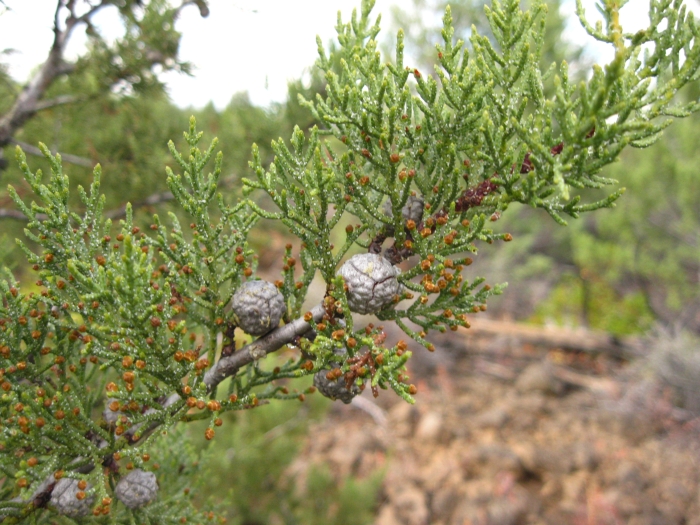Modoc Cypress
(Cupressus bakeri)
Modoc Cypress (Cupressus bakeri)
/
/

Themodoccypress
CC BY 3.0
Image By:
Themodoccypress
Recorded By:
Copyright:
CC BY 3.0
Copyright Notice:
Photo by: Themodoccypress | License Type: CC BY 3.0 | License URL: https://creativecommons.org/licenses/by/3.0 | Uploader: Themodoccypress | Publisher: Wikimedia Commons | Title: Cupressus_bakeri_foliage_and_cones1.JPG | Notes: {{flickr| |title=17 Mile Drive |description=A cypress in Pebble Beach, California, United States. |photographer=Rick |photographer_location=Boulder, USA |photographer_url=http://flickr.com/photos/35042004@N00 |flickr_url=http://flickr.com/photos/35












Estimated Native Range
Summary
Cupressus bakeri, commonly known as Modoc Cypress, is an evergreen tree native to the serpentine soils of the Klamath Mountains and the southern Cascade Range in California and Oregon. It is often found in mixed evergreen forests, including those dominated by pines. Modoc Cypress can grow to heights of 9–25 meters (30–82 ft) with a trunk diameter of up to 50 centimeters (20 inches). The bark is thin and fibrous, initially red-brown and becoming gray with age. The foliage is composed of sparse, aromatic sprays that are pendulous and range from dull gray-green to glaucous blue-green. The scale-like leaves are 2–5 millimeters long on rounded shoots. Seed cones are globular to oblong, 10–25 mm long, with distinctive warty resin glands, maturing from green to brown and eventually gray or gray-brown. Male cones are small, 3–5 mm long, and release pollen in late winter.
Modoc Cypress is valued for its drought tolerance and unique blue-green foliage, making it suitable for xeriscaping and as an ornamental specimen in gardens with dry soils. It is also used for reforestation in its native range due to its adaptability to poor soils. In cultivation, it requires full sun and well-drained soils, tolerating both low and medium water conditions. While generally disease-resistant, it can be susceptible to cypress canker in wetter climates. It is not known for aggressive roots or significant pest issues.CC BY-SA 4.0
Modoc Cypress is valued for its drought tolerance and unique blue-green foliage, making it suitable for xeriscaping and as an ornamental specimen in gardens with dry soils. It is also used for reforestation in its native range due to its adaptability to poor soils. In cultivation, it requires full sun and well-drained soils, tolerating both low and medium water conditions. While generally disease-resistant, it can be susceptible to cypress canker in wetter climates. It is not known for aggressive roots or significant pest issues.CC BY-SA 4.0
Plant Description
- Plant Type: Tree
- Height: 30-50 feet
- Width: 25-35 feet
- Growth Rate: Moderate
- Flower Color: N/A
- Flowering Season: Non-Flowering
- Leaf Retention: Evergreen
Growth Requirements
- Sun: Full Sun
- Water: Low, Medium
- Drainage: Fast, Medium
Common Uses
Bird Garden, Butterfly Garden, Drought Tolerant, Fragrant, Hummingbird Garden, Low Maintenance
Natural Habitat
Native to the serpentine soils of mixed evergreen forests in the Klamath Mountains and the southern Cascade Range
Other Names
Common Names: Baker’s Cypress, Baker Cypress, Siskiyou Cypress, Modoc-Zypresse, Cyprès De Baker, Cyprès De Modoc, Cipresso Di Baker, Oregoncypress
Scientific Names: , Cupressus bakeri, Hesperocyparis bakeri, Cupressus bakeri subsp. matthewsii, Cupressus bakeri subsp. bakeri, Cupressus bakeri subsp. typica, Callitropsis bakeri, Cupressus macnabiana var. bakeri, Neocupressus bakeri,
GBIF Accepted Name: Cupressus bakeri Jeps.